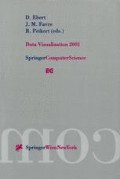Abstract
Instead of sequencing the candidate gene PCR fragment, simple methods such as restriction enzyme digestion after PCR are used to detect known mutation. In some cases, however, such methods cannot be applied and sometimes lead to an ambiguous result. A faster method would be required in case of mass screening or emergency. Recently, an elegant method to detect a known mutation with the LightCycler has been introduced. Rapid real-time PCR is monitored by fluorescent oligonucleotide probes that hybridize the target region of the PCR product. Only when the probes hybridize the template fluorescence resonance energy transfer occurs thereby producing a specific fluorescence emission. Then, by slowly heating the PCR product in the probe-hybridized state, the diminishing fluorescence value gives a melting curve. In the presence of mismatch sequences between the template and the probe, the probe melts off at a lower temperature. Therefore, the melting curve clearly demonstrates its genotype as the differences in Tm. This fluorescence PCR on the LightCycler has displayed its marked ability to detect single nucleotide substitution [1, 2]. However, many inherited diseases are caused by small deletion mutations as well as single nucleotide mutations.
Access this chapter
Tax calculation will be finalised at checkout
Purchases are for personal use only
Preview
Unable to display preview. Download preview PDF.
References
Lay MJ, Wittwer CT (1997) Real-time fluorescence genotyping of factor V Leiden during. RapidCycle PCR. Clin Chem 43: 2262–2267
Bernard PS, Lay MJ, Wittwer CT (1998) Integrated amplification and detection of the C677T point mutation in the methylenetetrahydrofolate reductase gene by fluorescence resonance energy transfer and probe melting curves. Anal Biochem 255: 101–107
McReynolds JW, Crowley B, Mahoney MJ, Rosenberg LE (1981) Autosomal recessive inheritance of human mitochondrial carbamyl phosphate synthetase deficiency. Am J Hum Genet 33: 345–353
Miyazaki T, Kajita M, Ohmori S, Mizutani N, Niwa T, Murata Y, et al. (1998) A novel mutation (E358K) in the ?-galactosidase A gene detected in a Japanese family with Fabry disease. Human Mutat [Suppl 1]: S139–5140
Aoshima T, Sekido Y, Miyazaki T, Kajita M, Mimura S, Watanabe K, Shimokata K, Niwa T. Rapid detection of deletion mutations of inherited metabolic diseases by melting curve analysis with LightCycler. Clin Chem 2000 Jan; 46 (1): 119–22.
Germain D, Biasotto M, Tosi M, Meo T, Kahn A, Poenaru L (1996) Fluorescence-assisted mismatch analysis (FAMA) for exhaustive screening of the alpha-galactosidase A gene and detection of carriers in Fabry disease. Hum Genet 98: 719–726
Hoshide R, Matsuura T, Haraguchi Y, Endo F, Yoshinaga M, Matsuda I (1993) Carbamyl phosphate synthetase I deficiency. One base substitution in an exon of the CPS I gene causes a 9basepair deletion due to aberrant splicing. J Clin Invest 91: 1884–1887
Chomczynski P, Sacchi N (1987) Single-step method of RNA isolation by acid guanidinium thiocyanate-phenol-chloroform extraction. Anal Biochem 162: 156–159
Author information
Authors and Affiliations
Editor information
Editors and Affiliations
Rights and permissions
Copyright information
© 2002 Springer-Verlag Berlin Heidelberg
About this chapter
Cite this chapter
Aoshima, T. et al. (2002). Rapid Genotyping of 2-bp and 9-bp Deletion Mutations Using the LightCycler Instrument. In: Dietmaier, W., Wittwer, C., Sivasubramanian, N. (eds) Rapid Cycle Real-Time PCR — Methods and Applications. Springer, Berlin, Heidelberg. https://doi.org/10.1007/978-3-642-59397-0_12
Download citation
DOI: https://doi.org/10.1007/978-3-642-59397-0_12
Publisher Name: Springer, Berlin, Heidelberg
Print ISBN: 978-3-642-63965-4
Online ISBN: 978-3-642-59397-0
eBook Packages: Springer Book Archive

